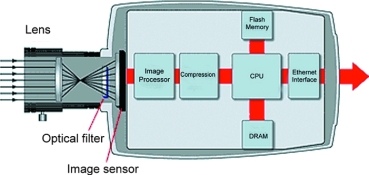
The move to open video systems - combined with the benefits of networking, digital imaging and camera intelligence - constitutes a far more effective means of security surveillance and remote monitoring than has ever been reached before. IP video provides everything that analog video offers, plus a wide range of innovative functions and features which is only possible with digital technology. Before setting up your own system, you need to consider what features the system can provide. It is equally important to consider factors such as performance, interoperability, scalability, flexibility and future-proof functionality.
This series of articles will walk you through these factors, helping you to achieve a solution that takes full advantage of the potential of IP video technology.
The technology leaders in IP video provide software and equipment that enable easy installation and compact and powerful solutions such that equipment can be securely and rapidly connected to virtually any wired or wireless network.
What is IP video?
IP video is a system that gives users the ability to monitor and record video over an IP network (LAN/WAN/Internet). Unlike analog video systems, IP video uses the network, rather than dedicated point-to-point cabling, as the backbone for transporting information. IP video refers to both the video and audio streams, which are digitised and transferred to any location in the world via a wired or wireless IP network. Most applications fall into two categories: security surveillance and remote monitoring.
IP video is highly suited to security surveillance, where digital processing and intelligence built into the camera can capture more information about critical events whilst reducing total data storage and transfer requirements. It is generally a more flexible and powerful alternative to CCTV.
For remote monitoring, IP video gives the ability to gather information at all key points of an operation and view it in realtime, both locally and remotely. Application examples include traffic and production line monitoring, and the monitoring of multiple store locations. The main vertical markets where IP video systems have been successfully installed are education (playgrounds, corridors, classrooms), transportation (railway stations and tracks, highways and airports), banking (banking halls, ATMs), Government (to provide safe and secure public environments), retail (security and loss management) and industrial (manufacturing processes, logistic systems, warehouse and stock control systems).
The core components
The core components of an IP video system are the network camera, the video server and video management software.
A network camera is a camera and computer combined in one unit. It captures and transmits live images directly over an IP network, enabling authorised users to locally or remotely view, store, and manage video over standard IP-based network infrastructure. It typically has a built-in web server, FTP server, FTP client, e-mail client, alarm management, programmability and much more, and is independent, with no need to be connected to a PC. It is not a web camera, which is essentially a PC accessory.
A network camera usually includes other functionalities and information being transported over the same network connection, ie, digital inputs and outputs, audio, and serial port(s) for serial data or control of pan/tilt/zoom mechanisms. It communicates with several applications in parallel, to perform various tasks, such as detecting motion or sending different streams of video.

The computer CPU, Flash memory and DRAM memory are specialised for network applications.
A video server makes it possible to migrate to IP video without having to discard analog equipment. It brings new functionality to analog equipment and eliminates the need for dedicated equipment such as coaxial cabling, monitors and digital video recorders (DVRs) - DVRs can be replaced by standard PC servers. A video server typically has between one and four analog camera ports and an Ethernet port. It contains the same functions as a network camera except that the video signal comes from the analog cameras and is digitised in the server. A video server can also be connected to a wide variety of specialised cameras, such as a highly sensitive black and white camera, a miniature or a microscope camera.
A wide range of video management software (usually Windows or Linux) supplies the basis for video monitoring, analysis and recording. For many applications a standard web browser connecting to the video camera or server's built-in web interface provides adequate viewing, especially if only one or a few cameras are viewed at the same time.
To view several cameras at the same time, dedicated video management software is required. In its simplest form, it offers live viewing, storing and retrieving of video sequences. Advanced software contains features like:
* Simultaneous viewing and recording of live video from multiple cameras.
* Several recording modes: continuous, scheduled, on alarm and on motion detection.
* Capacity to handle high frame rates and large amounts of data.
* Multiple search functions for recorded events.
* Remote access via a web browser, client software and even PDA client.
* Control of PTZ and dome cameras.
* Alarm management functions (sound alarm, pop-up windows or e-mail).
* Full duplex, realtime audio support.
Video intelligence
Leading suppliers also facilitate in-house and third-party application development through tools such as Axis' Application Programming Interfaces (APIs) and Software Development Kits (SDKs).
In later articles we will look at these components in more depth, as well as examining system design and implementation considerations.
For more information contact Roy Alves, Axis Africa, 011 548 6780, [email protected]

© Technews Publishing (Pty) Ltd. | All Rights Reserved.